 Leading Blog | Posts by Month |
 Leading Blog | Posts by Month |
12.31.13

LeadershipNow 140: December 2013 Compilation
See more on
Posted by Michael McKinney at 04:42 PM
12.25.13

Best Leadership Books of 2013
LEADERSHIP IS is an inside job. All of these titles help us to look at ourselves more deeply by asking the right questions. Sustainable leadership is a direct result of leaders that encourage feedback, listen and act positively on the information they receive to take their leadership effectiveness to the next level. Leadership is about relationships. Building your leadership legacy is about building others. You will be remembered through the growth of the people you leveraged your leadership power for. Are the people around you flourishing? The list below represents my picks for the best leadership books of 2013. by Steven Snyder Struggles are an inevitable part of the leadership journey. With every episode of struggle, there is a learning opportunity. Steven Snyder offers insights as how we should accept and reconcile the struggles we experience. (Blog Post) by Tom Asacker In The Business of Belief, Tom Asacker describes the job of leadership from the perspective of beliefs—yours and theirs. Understanding people’s beliefs is the first step in leading them. It's a critical message that every leader should read. (Blog Post) by Phil Jackson and Hugh Delehanty Phil Jackson offers 11 insights that transform ordinary leadership into great leadership. His 11 Principle's of Mindful Leadership are about leading with outgoing concern for others and good character. These principles should be a part of your personal leadership development plan. (Blog Post) by Todd Henry Todd Henry asks, “Are we willing to spend ourselves on behalf of something we care about?” Be purposeful about how you spend your time. As many people become more and more successful, comfort becomes their objective. We cannot pursue comfort as an objective. That’s the path to mediocrity. You cannot pursue comfort and great works simultaneously. Your work should represent what you care about. Will you die full of unexecuted ideas or will you die empty? (Blog Post) by Joseph L. Badaracco Jr. Underlying your leadership are certain values and assumptions. Leading responsibly and successfully is a struggle. Badaracco poses five questions leaders need to answer. The answers will guide and ground your choices in a world of widely divergent forces. (Blog Post) by Mike Myatt We all have gaps in our leadership. Hacking Leadership is for leaders who feel that their performance falls short of their potential and who want to know why. Myatt addresses 11 gaps from hacking perfection to hacking the future. He asks, “Do you want to be a leader who simply does what’s expected, or do you want to be a leader who makes what if a reality?” As a leader, you need to be focused on stretching yourself—hacking your leadership gaps. by David Burkus Creativity is not as divinely-inspired, unpredictable and random a gift as we tend to think it is. These persistent myths hinder our creativity and limit our ability to produce real creative thinking. Burkus debunks ten of these myths like the Eureka Myth, the Lone Creator Myth, and the Brainstorming Myth, to help us understand how to ignite what is already inside of us. by Nassim Nicholas Taleb Just as human bones get stronger when subjected to stress and tension, and rumors or riots intensify when someone tries to repress them, many things in life benefit from stress, disorder, volatility, and turmoil. What Taleb has identified and calls “antifragile” is that category of things that not only gain from chaos but need it in order to survive and flourish. Overly protective leadership can lead to more fragile followers. Very practical insights here. (Blog Post) by Bob Lutz Bob Lutz offer practical insights into leaders and leadership. Great leaders do not possess all of the ingredients we might think they must. It’s always a blend of good and bad. But, in Lutz’s words, the value they bring to the table consistently and heavily outweighs the negative baggage. Very encouraging for us mere mortals. by Adam M. Grant Every time we interact with another person at work, we have a choice to make: do we try to claim as much value as we can, or contribute value without worrying about what we receive in return? In the workplace, says Adam Grant, givers are a relatively rare breed. Are You a Giver or a Taker? (Blog Post) by August Turak Business Secrets of the Trappist Monks is about service and selflessness—two foundational ideas of good leadership. A reflective reading of this book will cause you to look more deeply into your own motivations and behaviors, live authentically and lead from who you are. Service and selflessness have the moral force to transcend market forces. by Gary Klein Gary Klein says that organizations stifle insights because we value predictability and crave perfection more than we value the disruption they bring. A better understanding of the nature of insights will help us to welcome them and make better use of them rather than suppressing them before they see the light of day. (Blog Post) Biographies: by Doris Kearns Goodwin Goodwin explores in detail the communication styles of William Howard Taft and Theodore Roosevelt. Taft’s failure as a public leader underscores the pivotal importance of the bully pulpit—that “wonderful platform” from which the presidency shapes public sentiment and mobilize action —in presidential leadership. It’s an engaging story of the relationship between Roosevelt, Taft and the muckraking press. by Brad Stone The Everything Store is an interesting account of the rise of Amazon and one of the world's leading entrepreneurs, Jeff Bezos. We learn about Bezos’ values and vision as well as his blind spots. There are lessons to be learned in all of it. by Richard Snow This is a well told story of Henry Ford’s rise from farm boy to one of America’s greatest industrialists. Snow portrays Ford with all of his strengths and weaknesses and the consequences of each. A study of Ford’s life provides insights into the world we live in today. Related Interest:
Posted by Michael McKinney at 02:38 PM
12.23.13

2 Ways Organizations Obstruct Insights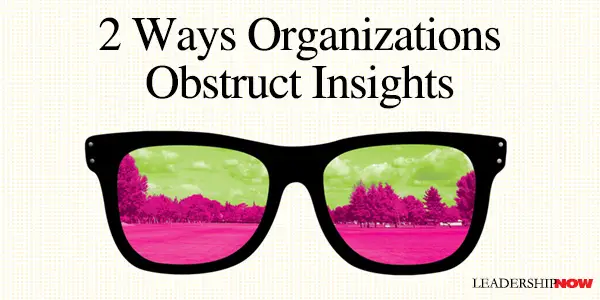
WE all want insights—the new thinking that “shift us to a new story, a new set of beliefs that are more accurate, more comprehensive, and more useful.” But we often don’t want the disruption they bring because insights have the power to change how we act, think and feel. In Seeing What Others Don’t, author Gary Klein says that organizations stifle insights because we value predictability and crave perfection.We fall into the predictability trap because we are “so captured by the lure of predictability” that we make it too high a priority. In short, we like the status quo. Managing people is easier when we know what we are doing and we are doing it in a certain way. Insights can change how we relate to each other and that creates the unexpected. “Insight is the opposite of predictable.” Organizations don’t like errors and try to eradicate them. Mistake-free performance helps keep things on track and running smoothly. “It’s much easier and less frustrating to manage by reducing errors than to try to boost insights. You know how to spot errors. You don’t know how to encourage insights other than hanging inspirational posters on the walls.” Even though insights can improve on perfection, perfection gets the job done. Why rock the boat? "In well-ordered situations, with clear goals and standards and stable conditions, the pursuit of perfection makes sense. But not when we face complex and chaotic conditions, with standards that keep evolving.” “The actions we take to reduce errors and uncertainty can get in the way of insights. Therefore, organizations are faced with a balancing act. Too often they become imbalanced and overemphasize … reducing errors and uncertainty.” To increase certainty and reduce errors we tend to:
All of these have benefits to organizations and individuals, but the problem arises when they are pursued with so much zeal that they interfere with insights. They can squelch thinking and reflection and lead to robotic behavior. Insights are dis-organizing, but we need them to stay relevant and grow. 
Posted by Michael McKinney at 03:43 PM
12.16.13

Are You a Thought Leader?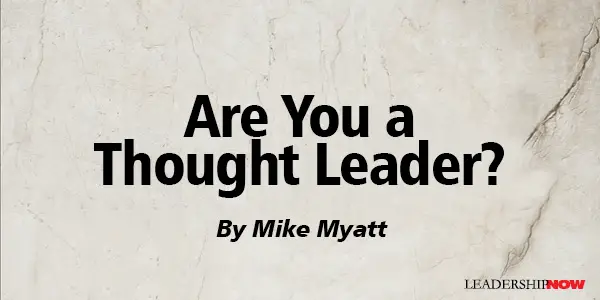
WHAT IS a thought leader, and what does thought leadership mean in today’s business world? As much as some people wish it wasn’t so, a thought leader is not someone who simply restates someone else’s views and positions. Furthermore, beyond uniqueness of thought, a true thought leader’s positions also challenge established norms and conventions. Moreover, the true litmus test for a thought leader is when their unique ideas are implemented in the marketplace, they tend to create disruptive innovation, and often change the way we view the world. It is certainly much easier to look back in time at world leaders, Nobel laureates, religious scholars, philosophers, and captains of industry to identify historical thought leaders than it is to identify today’s visionaries. This is due to the fact that thought leadership was once a term reserved for a limited few. Regrettably, the label of thought leader has evolved to become a self-bestowed title for anyone who has something to say or promote, often without regard for qualitative issues. Some would say that the term thought leader, once synonymous with futurist and innovator, is more closely aligned with snake-oil salesman today. Don’t get me wrong, true thought leaders still exist; they are just much harder to spot these days. Let me begin by stating that authentic thought leaders, the real deals, are not created via great marketing and PR alone. While they are oft published, quite outspoken, and many times represented by marvelous publicists, they are not merely contrived, self-promoted legends in their own minds. Rather true thought leaders are born out of real-world successes, achievements, and contributions that have been recognized by their peers and competitors alike. Their work is widely regarded as being innovative, disruptive, and market altering. They are not the posers, but the players. They are not spin masters trying to make it, but are the undisputed market leaders that have already arrived. It is also important to draw a distinction between personal or corporate branding and thought leadership. While thought leaders often become well-recognized brands, there are many well-crafted brands that have messaged thought leadership where none exists. Don’t allow yourself to get caught up in the spin and hype associated with great marketers who will gladly accept compensation, but will leave you woefully disappointed when it comes to living up to their billing. Look for real results based upon market leadership, and not just brand leadership alone. I have nothing against the term thought leader, however, it is my opinion the label should be reserved as an honor to bestow upon a select few, and not a title to be adopted by the masses. Dilution has the opposite effect of scarcity in that it diminishes value. Bottom line…judge people on their actions and results, not their rhetoric or their title. Don’t accept conventional wisdom as gospel unless you can validate proof of concept, and then only accept it if you can innovate with it, or around it. Challenge everything in business by looking to improve upon the status quo and differentiate yourself from your competition. I don’t advise my clients to adopt the practices of their peers, but rather to be disruptive with their innovation such that they create or widen market gaps between themselves and their peers. Lastly, when you run across a real thought leader, you’ll clearly recognize them as such for there is something truly unique in both their words and deeds.  
Posted by Michael McKinney at 05:22 PM
12.12.13

Could the Leadership Contract Help You Be a Better Leader?
IT IS no longer surprising to hear of another leader letting us down. They’re disconnected, they behave badly (if not disgracefully), and they are entrenched in wrong thinking. And we have begun to expect not much else. It numbs us generally, but it also lowers the expectations we have of ourselves. We become bystanders. In The Leadership Contract, author Vince Molinaro thinks that this is due to four primary reasons. First, we have relied on the heroic model of leadership—the idea that the leader at the top of the organization has all the answers and can single-handedly lead the way. “It is risky to put your faith in just one individual. And when you focus on only one leader at the top, you actually take your attention away from other leaders in an organization.”Second, we have glorified charismatic leaders. We turn them into celebrities. They become the face of the organization. We give them too much money and power. Charisma isn’t bad. “All leaders need a certain amount of it, but charisma can have a bad side too.” When leaders think that they can act any way they want without any accountability, we glorify jerks. Third, we have promoted technical superstars into leadership roles. “The thinking was that if you were strong technically, you would obviously be strong in a management or leadership role.” The problem is that they are entirely different activities and expectations began to move you further away from what made you a strong performer. “To cope, you then relegated the people issues to second place and focused on the more stimulating technical parts of your job. Then you became a leader in title but not in action.” Finally, Molinaro says that we have a quick-fix view to developing leaders. “We have been too simplistic about what it really takes to develop leaders.” Leadership is hard work. “We need to come to terms with the real, hard work required to be consistently great at the practice of leadership and to drive the sustainable performance of our organizations.” Molinaro believes the way out is the leadership contract and its four terms: 1. Leadership is a Decision—Make It
2. Leadership is an Obligation—Step Up
3. Leadership is Hard Work—Get Tough
4. Leadership is Community—Connect
Is it time for you to sign the leadership contract? 
Posted by Michael McKinney at 11:20 PM
12.09.13

The 12 Rules of Respect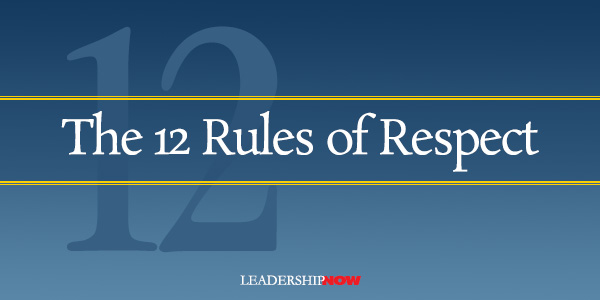 Paul Meshanko has highlighted the importance of demonstrating respect in all of our interactions in The Respect Effect. The desired result is that those we interact with will feel valued in some way. He offers 12 Ways of thinking and behaving around others:
Paul Meshanko has highlighted the importance of demonstrating respect in all of our interactions in The Respect Effect. The desired result is that those we interact with will feel valued in some way. He offers 12 Ways of thinking and behaving around others:
1. Be Aware of Your Nonverbal and Extra-verbal Cues.
2. Develop Curiosity About the Perspectives of Others.
3. Assume that Everyone is Smart About Something.
4. Become a Better Listener by Shaking Your “But.” The word “but” can be used in a way that hinders our ability to show respect. The word “but” negates what came before it. Replacing it with “and” and other words that validate and convey consideration, the entire tone is changed. 5. Look for Opportunities to Connect with and Support Others.
6. When You Disagree, Explain Why.
7. Look for Opportunities to Grow, Stretch, and Change.
8. Learn to Be Wrong on Occasion.
9. Never Hesitate to Say You Are Sorry.
10. Intentionally Engage Others in Ways that Build Their Self-Esteem.
11. Be Respectful of Time When Making Comments.
12. Smile!
Meshanko concludes with 3 key ingredients to improving your ability to demonstrate respect for others: Respect is about you and me, not “them,” and our commitment to it influences everyone around us. Once we understand the value proposition respect offers, that insight can provide us with patience, courage, and creativity. 
Posted by Michael McKinney at 11:13 PM
12.05.13

Nelson Mandela Dies Today at 95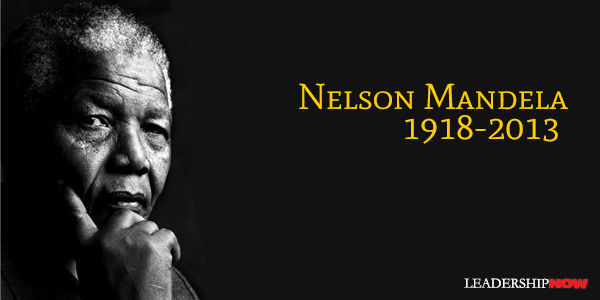
FORMER South African President Nelson Mandela, died today at the age of 95. He spent 27 years in prison for battling the apartheid government, but it transformed him. He became the Mandela we know with a remarkable capacity to forgive and a moral courage that would heal the wounds of his country. 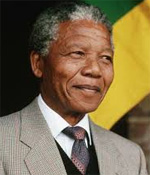 Richard Stengel, who collaborated with Nelson Mandela on Mandela’s best-selling 1993 autobiography, Long Walk to Freedom, wrote an article for Time Magazine in 2008 in which he extracted 8 lessons of leadership from Mandela’s life:
"We recall our terrible past so that we can deal with it, to forgive where forgiveness is necessary, without forgetting; to ensure that never again will such inhumanity tear us apart; and to move ourselves to eradicate a legacy that lurks dangerously as a threat to our democracy." (From the opening address at the debate on the report of the Truth and Reconciliation Commission, February 1999)
Posted by Michael McKinney at 10:26 PM
12.02.13

Leading Through Uncertainty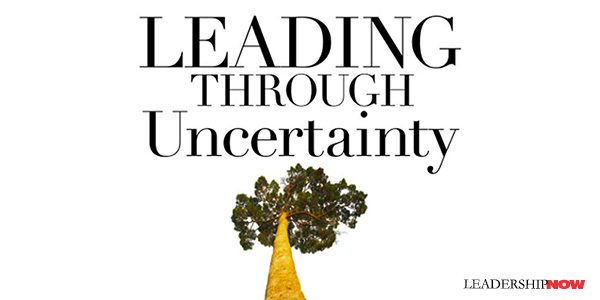
IN times of great uncertainty, we must be leaders. In Leading Through Uncertainty, Ray Davis writes, “Effective leadership is motivating, and it can and should be the energy that propels a company through inevitable waves of change. Poor leadership can lead to disaster and has sunk more than a few companies and governments alike.” Davis divides the book into three parts: leading yourself, leading your organization, and leading the way. He shares the ideas that have allowed Umpqua Bank—the West Coast’s largest independent community bank—to emerge from the economic crisis even stronger than before. The problem some will have with the book is that it requires a secure leader. A leader that can set his or her ego aside. And a leader that truly cares about their people, their organization, and the people they affect. Leading through uncertainty means leading with the truth. People can handle the truth. “The negative energy created by worrying is replaced with positive, productive actions and attitudes.” Of course, some leaders are afraid of the truth because it incriminates them and exposes their weaknesses. Davis says, “I always tell our people that they’re entitled to get answers to every question they have. I let them know I’m not going to defend myself when it comes to their questions, but I will explain what’s going on. I also tell them that while they’re entitled to answers to every question, that doesn’t mean they are going to like the answers.” Being truthful means acknowledging the problem. Saying peace when there is no peace—saying everything is fine when it isn’t—is only whitewashing that will erode trust and peace. You must have a firm foundation in the basics, says Davis, and then walk the walk and talk the talk. We’re all busy but listening is essential. “I think it is a mistake for people in my position not to make themselves available to their customers, their people, and the community at large.” When you don’t have all the answers, listening goes a long way. Leaders don’t lead in a vacuum. Secure leaders reach out to others. They give them the ability to provide constructive criticism which is hugely valuable of and by itself but it also serves to motivate and keep people involved in the process. “How else can a company get better if it’s not willing to listen to constructive criticism if it’s not willing to listen to what it’s not doing as well as it could? If you’re not willing to listen, you’re not going to improve and you’re not going to grow.” Great leadership begins with us. “I believe this starts with an introspective and honest inventory—first of yourself and then of your organization. Companies regularly evaluate their strengths, weaknesses, opportunities, and threats to make sure they are focused on the right issues. I wonder, however, how many leaders do the same evaluation on themselves. I recommend this as a good starting point.” 
Posted by Michael McKinney at 11:22 PM
12.01.13

First Look: Leadership Books for December 2013Here's a look at some of the best leadership books to be released in December.




For bulk orders call 1-800-423-8273 From Independent Publishers:  Thoughts Spoken from the Heart by Lolly Daskal Thoughts Spoken from the Heart by Lolly DaskalDaskal has put together over 500 thoughts that bring meaning to your life. Her hope is that “each thought will provide you with a meaningful perspective of yourself and the word around you.”  Build your leadership library with these specials on over 120 titles. All titles are at least 40% off the list price and are available only in limited quantities.
Posted by Michael McKinney at 06:02 PM
|
BUILD YOUR KNOWLEDGE


How to Do Your Start-Up Right STRAIGHT TALK FOR START-UPS 
Grow Your Leadership Skills NEW AND UPCOMING LEADERSHIP BOOKS 
Leadership Minute BITE-SIZE CONCEPTS YOU CAN CHEW ON 
Classic Leadership Books BOOKS TO READ BEFORE YOU LEAD |
|